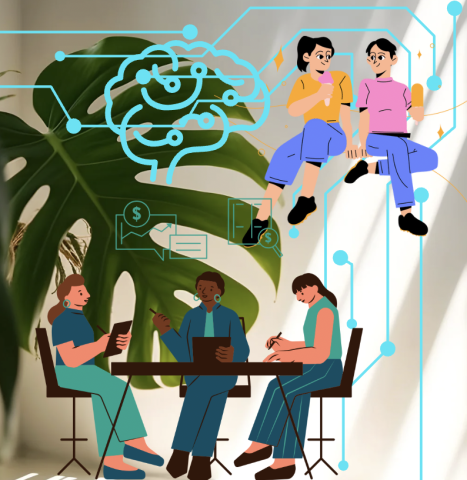
In a world where nearly every aspect of our lives has gone digital—our friendships, work, entertainment, and even therapy—it’s easy to believe we’ve never been more connected. We can message anyone, anywhere, at any time. We can share photos, celebrate milestones, and express empathy with a tap of an emoji. Yet many people report feeling lonelier, more misunderstood, and emotionally isolated than ever before.
This paradox—constant connection paired with growing disconnection—has become one of the defining psychological challenges of our time. While technology offers unprecedented access to others, it can also foster superficiality and create invisible barriers to genuine human connection. Understanding how and why this happens is key to restoring authenticity, depth, and presence in our relationships—both online and off.
Technology gives us the illusion that we are maintaining relationships simply by staying in touch. A quick “like” or comment on a friend’s post may feel like a form of social engagement, but it rarely fulfills our deeper relational needs. These micro-interactions can reduce complex human exchanges into surface-level performances—highlighting what’s polished, filtered, or convenient, rather than what’s real.
In psychological terms, these interactions stimulate short bursts of dopamine, reinforcing our use of social media or texting as a form of quick emotional gratification. However, unlike meaningful human contact, they rarely provide the oxytocin, empathy, or co-regulation that occur when people connect face-to-face. Over time, this can leave individuals feeling emotionally malnourished—constantly “fed” by social input, yet starved for emotional depth.
Performativity and Social Media
Social media platforms often encourage what psychologists might call “performative self-presentation.” Instead of showing up authentically, people tend to craft idealized versions of themselves to gain approval or avoid judgment. This performance pressure can turn ordinary interactions into opportunities for validation rather than vulnerability.
Consider how different it feels to share a painful experience privately with a trusted friend versus posting about it publicly. The first invites empathy and intimacy; the second risks judgment or shallow reassurance. Even well-intentioned responses—“You’ve got this!” or “Stay strong!”—can inadvertently minimize the complexity of what someone feels.
Clinicians increasingly observe how this shift toward digital performance affects clients’ sense of identity. Many people now describe themselves as feeling fragmented—one version of themselves online and another in person. This dissonance can contribute to anxiety, imposter feelings, and difficulty trusting others. When authenticity becomes filtered, trust erodes, and the foundation for true connection weakens.
Avoidance
Technology also makes avoidance easier. In-person interactions require presence, attention, and tolerance for emotional nuance—skills that can be uncomfortable or exhausting, especially for people experiencing stress or trauma. The digital world, in contrast, allows for escape. If a conversation becomes uncomfortable, one can simply stop replying or switch apps.
This form of emotional avoidance can subtly condition people to disengage when relationships feel challenging. Over time, that avoidance can undermine emotional resilience and the ability to repair ruptures in relationships. Psychologically, this dynamic mirrors what we see in attachment theory: when people learn to withdraw or self-soothe through technology, they may rely less on others for co-regulation and comfort. The result is a quieter, lonelier existence—even when surrounded by hundreds of “friends.”
Intimacy
Younger generations, who have grown up with technology as a default mode of communication, often experience a different baseline for intimacy. Text-based communication lacks tone, body language, and facial expression—all vital components of empathy and understanding. This absence of nonverbal cues can lead to misinterpretations and reduced emotional depth.
Research has shown that face-to-face communication activates mirror neurons, allowing people to “feel into” another’s emotional state. Without this embodied connection, conversations can become transactional rather than transformational.
For older adults, this shift may be particularly alienating. Many describe feeling that modern interactions lack warmth or sincerity, even when loved ones are technically “in touch.” A video call or text may be better than nothing—but it rarely replaces the richness of shared presence.
Convenience
Technology’s convenience is both its greatest strength and its hidden danger. We can now maintain dozens of relationships at once, but often at the expense of depth. The brain has natural limits on how many emotionally meaningful relationships it can sustain—researchers estimate about 150, known as “Dunbar’s number.” Yet digital platforms encourage us to maintain hundreds or thousands of connections. The result is cognitive overload and emotional thinning.
In therapeutic contexts, this thinning can manifest as emotional fatigue, shortened attention spans, and difficulty engaging in reflective dialogue. Clients may describe feeling “burned out” by communication itself—overwhelmed by constant pings, notifications, and the pressure to respond. Even rest can feel elusive when every silence is filled by a screen.
The Role of Mindful Engagement
Technology itself is not inherently harmful—it’s how we use it that determines its impact. Just as food can nourish or numb, digital connection can heal or harm depending on the intention and awareness behind it.
Practicing mindful engagement means becoming aware of how and why we reach for technology. Are we scrolling for genuine connection, or to distract from loneliness? Are we texting to share, or to control how others perceive us? This awareness allows us to reintroduce choice into what often feels like an automatic behavior.
Simple practices can help restore balance:
-
Schedule screen-free moments: Dedicate certain times of day for in-person or offline connection.
-
Prioritize depth: Choose fewer, more meaningful conversations over many superficial ones.
-
Use technology as a bridge, not a buffer: Let it initiate connection, but follow up in person when possible.
-
Notice emotional residue: After digital interactions, ask yourself how you feel—energized, connected, or drained? Let that guide your future use.
Reclaiming Real Connection
The path toward more authentic connection begins with small, intentional choices. It might mean calling instead of texting, listening without multitasking, or resisting the urge to curate a perfect version of yourself online. These acts, though simple, push against the current of superficiality that dominates much of digital life.
In clinical work, therapists can model this authenticity—slowing down, fostering presence, and validating the discomfort that comes with real contact. For clients, the therapeutic relationship itself can become a corrective experience: a place where no filter is needed, no performance is required, and where connection exists in real time.
Human beings are wired for closeness. We thrive not on the quantity of our interactions, but on their quality. Technology, when used with intention, can extend our reach—but it cannot replace the subtle, healing power of being truly seen.
